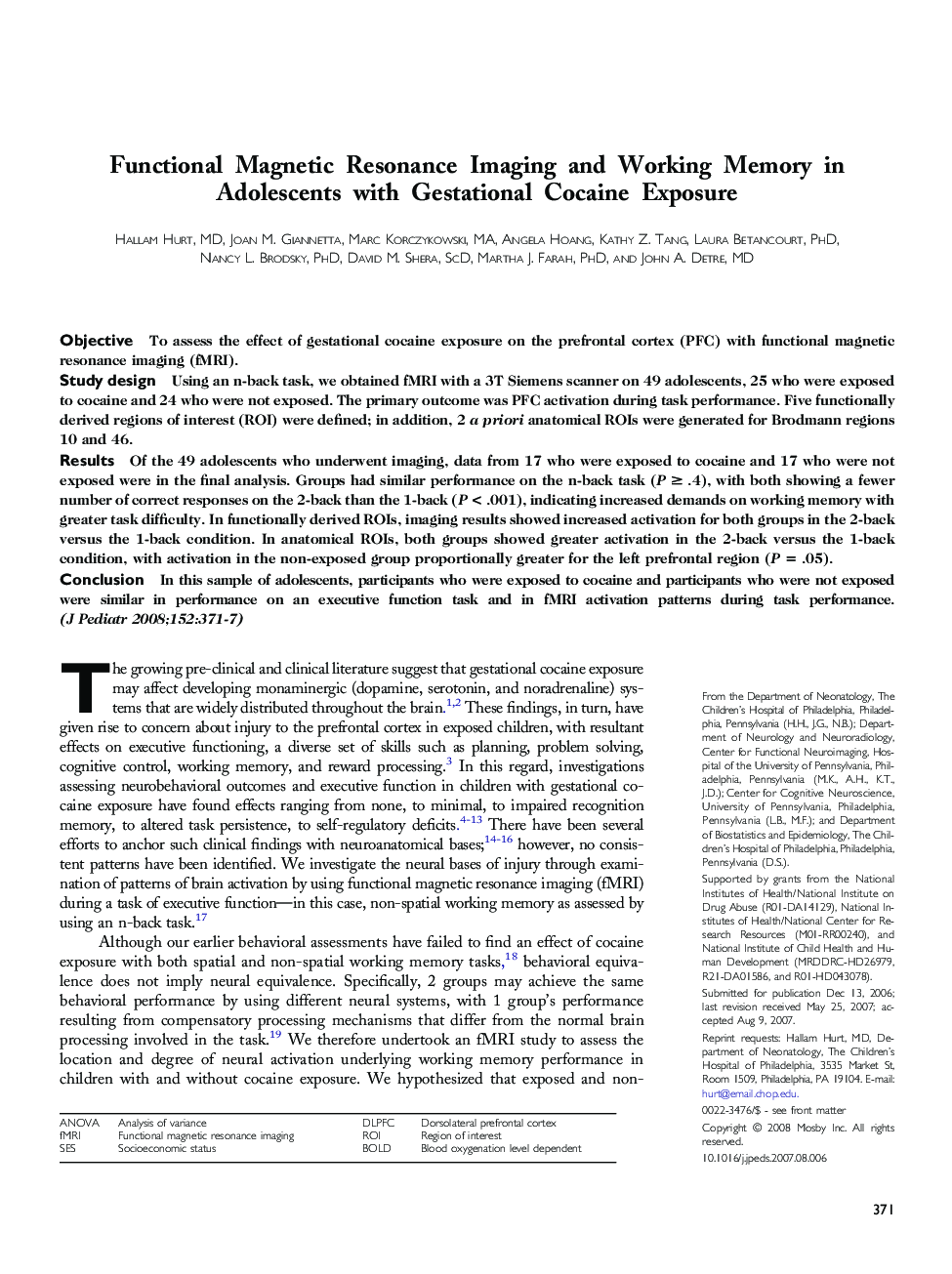| Article ID | Journal | Published Year | Pages | File Type |
|---|---|---|---|---|
| 4167805 | The Journal of Pediatrics | 2008 | 7 Pages |
ObjectiveTo assess the effect of gestational cocaine exposure on the prefrontal cortex (PFC) with functional magnetic resonance imaging (fMRI).Study designUsing an n-back task, we obtained fMRI with a 3T Siemens scanner on 49 adolescents, 25 who were exposed to cocaine and 24 who were not exposed. The primary outcome was PFC activation during task performance. Five functionally derived regions of interest (ROI) were defined; in addition, 2 a priori anatomical ROIs were generated for Brodmann regions 10 and 46.ResultsOf the 49 adolescents who underwent imaging, data from 17 who were exposed to cocaine and 17 who were not exposed were in the final analysis. Groups had similar performance on the n-back task (P ≥ .4), with both showing a fewer number of correct responses on the 2-back than the 1-back (P < .001), indicating increased demands on working memory with greater task difficulty. In functionally derived ROIs, imaging results showed increased activation for both groups in the 2-back versus the 1-back condition. In anatomical ROIs, both groups showed greater activation in the 2-back versus the 1-back condition, with activation in the non-exposed group proportionally greater for the left prefrontal region (P = .05).ConclusionIn this sample of adolescents, participants who were exposed to cocaine and participants who were not exposed were similar in performance on an executive function task and in fMRI activation patterns during task performance.
